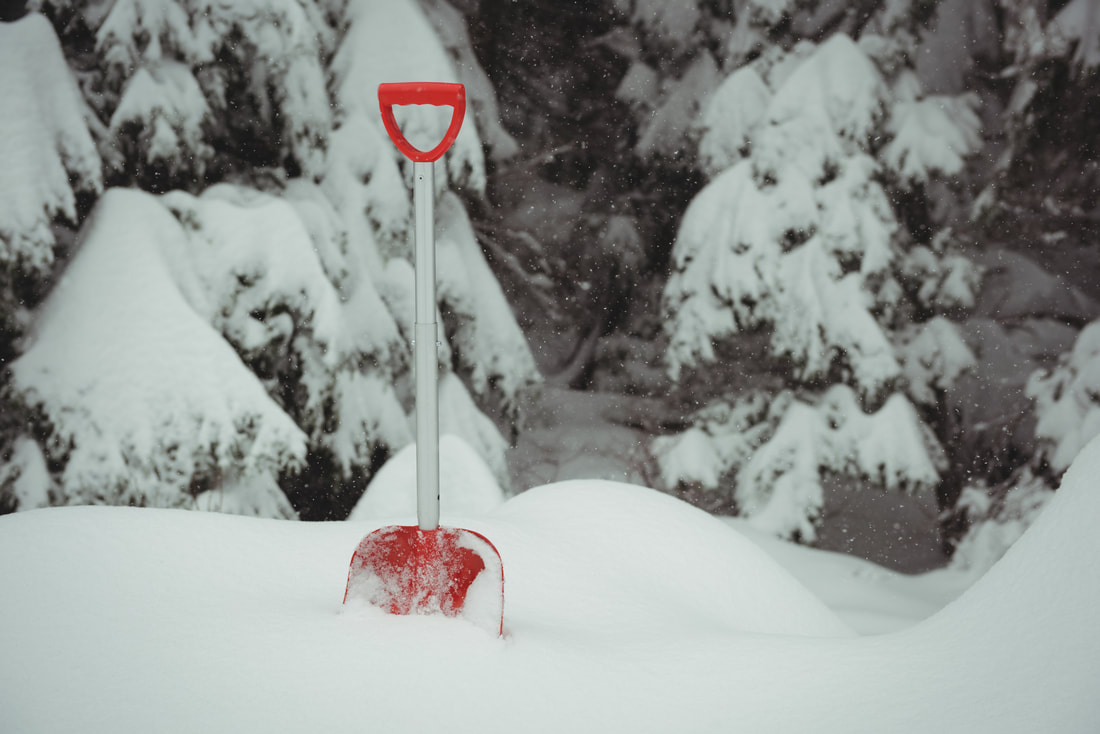Shoveling snow is an activity that can be surprisingly dangerous and can lead to quite serious injuries. It’s an activity that mixes cardiovascular work with cold temperatures and heavy lifting. So for those struggling with existing injuries or health conditions, it can be a challenge.
There are a few common injuries that can strike when shoveling snow, such as:
Snow can be heavy – especially when you are shoveling a lot of it. Combining this with poor technique is a recipe for lower back pain and injuries.Hand And Wrist Injuries When Snow Shoveling
As well as the weight of the snow itself, gripping the shovel can place strain on the smaller muscles in your hands and wrist.
If you have particularly weak wrists, or problems with your forearms and elbows, gripping a shovel and moving lots of snow can overwork these muscles and create discomfort.
Slips, Trips And Falls When Shoveling Snow
Other common injuries happen as a result of slips, trips and falls.
The slippery, snowy surface means that your fall risk is higher, and this can be greatly increased if you aren’t very active or not experienced with shoveling.
A fall can result in a variety of injuries from cuts and bruises, right up to serious musclular injuries and broken bones.
Tips For Avoiding Injuries When Shoveling Snow
If you are worried about injuring yourself when shoveling snow, don’t worry – This activity, that’s essential for some, can made much safer by following a few simple, but effective steps.
Warm Up Before You Grab Your Shovel
Moving snow can be a challenging activity, and usually is something that we typically do early on a morning when our bodies may be a little stiff from a full night’s sleep.
Warming up before grabbing your shovel can make a big difference at reducing muscle strains. A simple stretching routine doesn’t take long but reduces your risk of injury significantly.
Get The Right Tools For The Job
If you struggle to clear snow, consider whether your shovel is up to the task. Shovels can be lightweight, and have a curved handle which stops you from having to bend and makes it much easier to move the snow.
This can make a challenging activity a lot easier.
Another idea is to buy a snow melting mat – if not for the whole area, it can at least clear the first section of snow, and mean that you have a much safer surface to start on.
Wear The Right Footwear For Snowy Conditions
We talked about slips being a common cause of injury, and for good reason. A slip of ice or snow can mean a painful crash to the floor, in extreme cases resulting in broken or fractured bones, especially for elderly people who are more vulnerable to these injuries.
Another risk with falling in the snow is that it can be very hard to get back up. Due to the slippery surface, a fall on the floor can not only end with bruises (or worse), it can lead to being unable to get back up until help arrives.
A way to reduce this risk is wearing non-slip footwear that will help you stay steady and stable on your feet.
Take Breaks
If you have a large area to shovel, break this up into smaller blocks rather than tackling the whole thing at once.
After 15 minutes, stand up, walk around a little, and grab a hot drink to keep yourself warm – you’ve earned it!
Stay Hydrated
We’ve talked about how exhausting snow shoveling can be – especially for those over 50, or suffering with other health conditions or injuries.
A common mistake for those who have trouble when shoveling snow is becoming dehydrated.
Improve Your Shoveling Technique
Try to push snow, rather than lifting it as much as possible to reduce the stress on your body.
If you are lifting a shovel full of snow, make sure to not overload it, and bend your knees rather than your lower back.
Also, avoid twisting your body, and throwing snow which can put a lot of stress on your lower back and shoulders.
After a few minutes of shoveling, following the advice above can reduce the chances, and severity of any aches and pains you got later in the day.
Stop When You Experience Pain
If you experience pain, that’s a sign to stop. Especially if it’s a different pain than you are used to, or if it becomes more severe or frequent than usual.
When you shovel snow, and continue to do so after you feel pain, it’s very likely that you will be aggravating it, and making it harder to recover from.
Take a break, and if the pain hasn’t gone away, take a longer rest and consider waiting for the temperature to warm and for the snow to melt a little before starting again.
Wrap Up Warm
As well as wearing the right footwear, make sure you keep the rest of your body protected from the cold.
Whilst shoveling snow is likely to get your blood pumping, and body temperature to rise, it won’t at first.
So make sure you wrap up warm to start with – you can always remove a layer if you need to as you shovel.
The Best Way To Recover From Snow Shoveling Injuries
If you’re in pain after a snow shoveling incident – whether that’s a fall, injury, or you’ve just overdone it – our team is here to help!
You can get quick, natural pain relief so you don’t need to take pills on a regular basis.
You can also discover the root cause of your pain, which will mean that you can stop it once and for all, and avoid it coming back in future.
If you are looking for a drug-free solution to your back, knee, or neck and shoulder pain, arrange a Free Discovery Visit or Free Telephone Consultation to find out the best treatment options available to you!
One of those treatment options may be orthotic shoe insoles – a device worn inside your footwear – which helps correct imbalance and has helped hundreds of our patients overcome ankle, knee, hip and lower back pain.
Right now, we have an offer where you can save $20 on orthotics, so contact our friendly team on 208-237-2080 and we can arrange a convenient time for you to visit.
But hurry, this offer is only available to the first 5 people.
Other Natural Pain Relief Solutions
Download our Free Back Pain Report, Free Knee Pain Report, Â or Free Neck And Shoulder Pain Report
Read Our Blog – Protect Your Body When Removing Snow
Read Our Blog – Skiing And Snowboarding Injury Prevention
Follow Us On Social Media – Highland Physical Therapy Facebook and Highland PT Instagram



Thank you for pointing out that grasping a shovel and shoveling a lot of snow might overwork these muscles and cause discomfort if you have weak wrists or issues with your forearms or elbows. My friend is an athlete. During the race, she lost her balance. I’ll advise her to get therapy from an elbow pain expert.